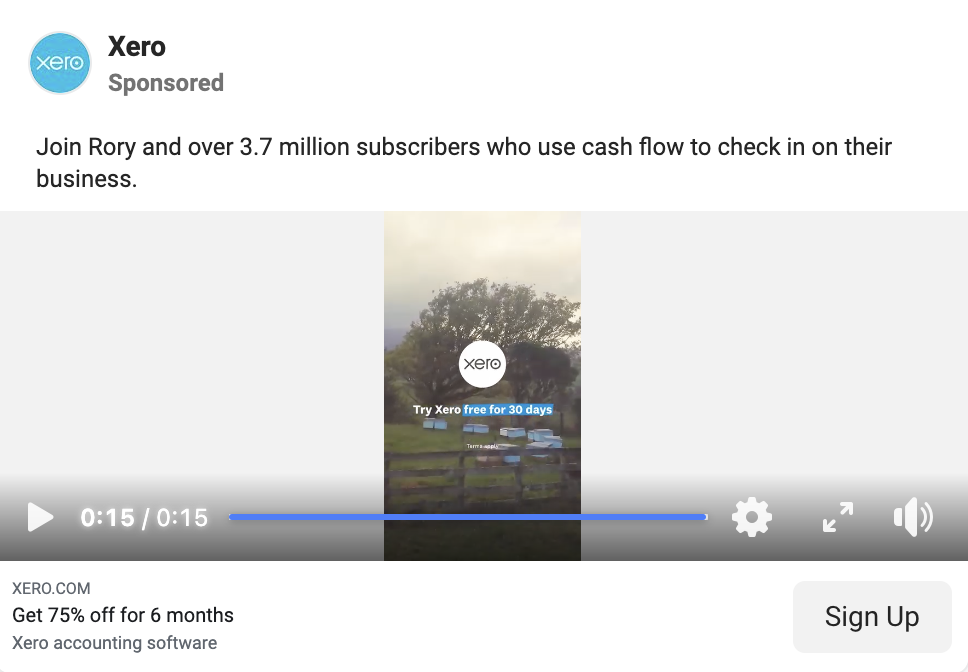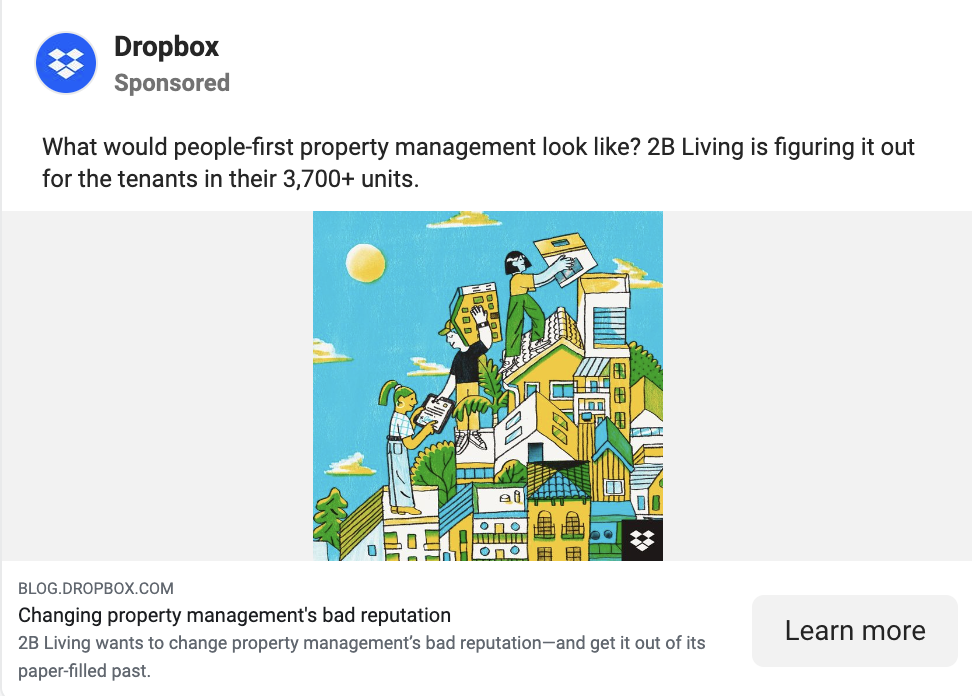My all-time favorite testimonial ad campaign is from Surreal, a breakfast cereal company. If you were in London in 2023, you might have seen billboards proclaiming “Serena Williams* eats our cereal.” Then came the hilarious disclaimer: “*She is a student from London and we paid her to eat it but the point still stands.”
The best testimonial ads are deeply tailored to their target audience: they can be tongue-in-cheek, like Surreal’s fake Serena endorsement, or entirely serious. While plenty of audiences respond well to traditional text-only testimonials and case study excerpts, younger audiences often look for more authentic messaging and user-generated content (UGC).
To get a sense for how brands are approaching testimonial advertising these days, I’ve scoured the web for all sorts of examples. But first, here’s a quick primer on what testimonial ads are—and why they’re as popular as ever.
What is testimonial advertising?
When a customer endorses a product and the company uses that endorsement in an advertisement—that’s a testimonial ad. They’ve been around since the dawn of advertising: in a classic ad from the 1940s, a beer brand called Rheingold recruited the actor Gregory Peck to say that their product was “New York’s favorite beer and mine too!”
While Rheingold may indeed have been Gregory Peck’s favorite beer, today’s consumers are more discerning about this sort of pay-to-play endorsement. Still, testimonial ads that are perceived as authentic are just as effective as ever.
The most common types of testimonial ads include:
Below, I’ll walk through examples of each.
Testimonial advertising examples
From a Facebook ad about beekeepers to a billboard in Times Square, these examples show the diverse forms testimonial advertising can take.
1. Hotjar’s targeted image ads on LinkedIn
Testimonial ads don’t have to be complicated. Hotjar’s LinkedIn ads stick to the basics: a short text blurb followed by a testimonial from a customer in Hotjar’s target demographic (Hotjar has a range of similar ads covering other portions of its target audience).
I like that the ad below also includes other elements of social proof, including the face of the person behind the testimonial and a reference to the fact that 1.3 million websites use Hotjar.
2. Gusto’s text-based endorsement ad on LinkedIn
Reviews from well-known publications are another form of social proof that can be just as powerful as customer testimonials. Gusto’s LinkedIn ads build trust by promoting the fact that the U.S. News & World Report, along with Business.org, have crowned Gusto as the “best payroll software.” (When I saw this, it was a LinkedIn Lead Gen Forms ad with a “Learn more” button that took me directly to a form to gauge whether I was a good fit).
This sort of strategy works well for short blurbs, as Gusto demonstrates below. For longer text ads, customer testimonials feel more authentic and engaging.
3. Shopify’s video case study on LinkedIn
A key element of Shopify’s ad strategy revolves around convincing customers to migrate from other platforms. Case studies are a good way to make this argument, but case study excerpts don’t always make for the most engaging ads.
This LinkedIn video case study ad from Shopify (which also had a “Learn more” button) manages to have it both ways: it highlights the most compelling parts of one customer’s story in 20 seconds, and then directs users to the full case study on Shopify’s website for more.
4. SurveyMonkey’s influencer video ad on Facebook
SurveyMonkey, which offers—no surprise—online survey tools, has a unique advantage: it’s easy to try their product in just a few seconds. Instead of having influencers talk about how great the product is, SurveyMonkey’s video testimonials feature creators asking their audience to fill out a survey. This gets customers to engage with the value proposition of SurveyMonkey (and presumably queues them up for retargeting—smart).

5. Jotform’s user spotlight video on Instagram
You might assume that form software is mainly used by other software companies. But Jotform’s user spotlight video on Instagram challenges that assumption by featuring a jewelry store. The video testimonial is accompanied by a long-form case study on Jotform’s website.
6. Notion’s “day in the life” video ad on LinkedIn
Notion is a highly adaptable product: you can use it as a CRM, as a company-wide workspace, or simply to organize your life. With so many different use cases, it’s a challenging product to advertise. One approach Notion takes is to produce “day in the life” video ads that show how different users interact with the product. (This one had a “Request demo” link in its original version, so you could click to dive right in.)
7. Cisco’s case study ad for brand awareness on Facebook
Many companies on this list hope to generate a direct response from their ads. But Cisco’s case study ads are tailored toward brand awareness: the below Facebook ad focuses on the story of how Real Madrid, the Spanish football club, used Cisco products to improve the experience of their fans and employees. There are no “Buy now” or “Sign up” calls to action—just a link to the full case study.
8. Square’s UGC testimonials on Instagram
Square is a mobile payment company with a presence in millions of small businesses around the world. That kind of mass adoption comes with unique challenges: Square’s social posts are full of supportive comments, but also more than a few irate customers looking to vent.
But on the positive side, Square has an enormous quantity of user-generated content to work with in its marketing. One of Square’s go-to approaches is grabbing customer reviews from social media and embedding them in an Instagram post (while tagging the customer who left the testimonial).
Square’s Instagram Stories strategy, on the other hand, is all about highlighting its customers’ businesses. While the focus is purely on entertainment—there’s nothing overtly promotional—these stories work as implicit endorsements, since you know each of the small businesses featured is a Square customer.
9. RingCentral’s swipeable case studies on Instagram
Case studies are great, but they’re not always easy to translate into social media-friendly bite-sized takeaways. That’s why I like RingCentral’s approach: it condenses its case studies into Instagram carousels. (On Instagram, RingCentral also makes a point to highlight its work with well-known brands like NBA and NFL teams).
10. Airbnb’s UGC testimonials and photos on Instagram
With nearly six million followers on Instagram, Airbnb is one of the few big brands that post content people actually look forward to. (Anecdotally, I noticed at least a dozen of my friends follow them; that isn’t the case for any other company on this list).
Here’s Airbnb’s strategy: feature quotes and photos from happy Airbnb guests who’ve stayed in beautiful homes around the world. Not every brand can get away with this; but if your product lends itself to this kind of “non-promotional” promotion, you might just find yourself with a lot more followers.
11. Xero’s attention-grabbing Facebook video testimonials
Accounting software isn’t the most exciting topic, which is why the first line of Xero’s video testimonial grabbed my attention: “I’m allergic to bees, so my husband does the beekeeping.” Rather than getting too corporate with its messaging, Xero leans into the most interesting stories from its nearly 4 million customers, from beekeepers to dog massage businesses.
Xero’s testimonial ads feature a steep discount (75% off the first 6 months), and they have a “Sign up” button to take you straight to the signup page.
12. Mighty Networks’ Facebook case study ads
The Mighty Networks website is full of stories of customers who’ve boosted their incomes by millions of dollars. Mighty Networks’ Facebook ads function largely as teasers for these stories, leading with impressive outcomes (“From $2.8M to $5.5M in one year”) and directing prospects toward a landing page offering them a free trial.
13. Zendesk’s simple LinkedIn text ads
It doesn’t get simpler than this: Zendesk’s LinkedIn ads feature short quotes from customers who’ve made the switch to Zendesk from competitors. From there, prospects are routed to one of Zendesk’s standard landing pages via a “Learn more” button.
This kind of ad format is a reminder that you don’t need a massive budget to fly to your customers’ offices and film high-definition videos. You can get started by pulling simple text quotes from your case studies (or even from online reviews).
14. Webflow’s “webinar case study” ad on Facebook
Webflow’s ads were the only ones I came across that presented testimonials in a webinar format. Why not cut the content into a more accessible ad format like short-form video clips for Instagram Stories or YouTube? I think Webflow is using the webinar format as a filter: consumers will be turned off, but enterprise customers won’t hesitate to sign up for it.
15. Dropbox’s journalism-style case study teaser on Facebook
A teaser for a new investigative journalism piece from The Economist? Nope: it’s a case study from Dropbox. But the company wisely focuses on its customer’s story; only once you click through to the full case study do you see how Dropbox fits into the picture.
Dropbox’s example is a good reminder that on Facebook—and most other social networks—your audience wants to be entertained and to follow their curiosity. Your testimonials will be more effective if they look like the content your audience is already consuming, rather than standing out blatantly as ads.
16. Zoom’s video testimonial featuring a Formula One team
Software ads often get too jargon-y for their own good (i.e., “Optimize your SQL and BI workloads by saying goodbye to your legacy cloud data warehouse!”). Fortunately for Zoom, its product—video conferencing software—is more hands-on and accessible than most SaaS tools.
But Zoom still isn’t as interesting as Formula One racing. Unless your product is inherently fascinating, you should copy Zoom’s playbook: partner with your most interesting customers to make your product seem cooler by association.
17. Acquire.com’s testimonials on a Times Square billboard
Some companies retweet the nice things customers say about them. Others turn testimonials into LinkedIn ads. But Acquire.com—an online marketplace for buying and selling startups—promotes their customer testimonials on a billboard in New York’s Times Square.
Billboards aren’t the trendiest of advertising strategies, but because a billboard in Times Square has a certain status associated with it, it’s inherently shareable—meaning it does double-duty as a social media strategy.
Spotted on a billboard in NY Times Square 🚀 Congrats on the acquisition, David! pic.twitter.com/rIt3oUQmht
— acquire.com (@acquiredotcom) February 27, 2024
Automate your online ads
Rounding up customer testimonials and queuing them to go live is enough work as it is. Use Zapier to connect your ad platform with the rest of your marketing apps, so you can automatically do things like sync lead data across platforms, track what’s working (and more importantly, what’s not), and nurture leads faster.
Learn more about how Zapier can help you automate your digital ads—and the rest of your marketing workflows—or get started with one these pre-made templates.
Zapier is the leader in workflow automation—integrating with 6,000+ apps from partners like Google, Salesforce, and Microsoft. Use interfaces, data tables, and logic to build secure, automated systems for your business-critical workflows across your organization’s technology stack. Learn more.
Related reading:







